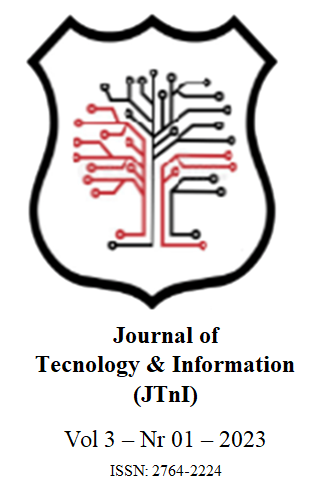A Suggestion of an Algorithm to Promote Data Quality in Data Mining for Direct Marketing Campaigns
Keywords:
Clarification, Database, Marketing, AlgorithmAbstract
One of the biggest obstacles to be overcome by professionals specialized in information analysis is the transformation of data into information. Large companies generate more and more data from different sources, it is plausible to encounter problems in their standardization. Marketing is based on information for creating campaigns and other actions, therefore, it is essential that this data is entered correctly. Given this context, this research sought to identify the main requirements for data clarification with the suggestion of an algorithm to be implemented according to the company's environment that served as the study objective. The methodology used was Design Science Research. The result obtained was a computational model presented in UML diagrams that will perform the cleaning of information from a company's database. The contribution to the theory is to present the problems arising from a company in relation to data quality. The contribution to the practice is to present an algorithm suggestion for data cleaning to IT managers, systems analysts and programmers to use in their systems
References
Amaral, F. C. N. do. (2001). Data Mining: Técnicas e aplicações para o marketing direto. Editora Berkeley.
Armstrong, G., Adam, S., Denize, S., & Kotler, P. (2014). Principles of Marketing. Pearson.
Batini, C., & Scannapieca, M. (2006). Data quality dimensions. Data Quality: Concepts, Methodologies and Techniques, 19–49.
Castro, L. N., & Ferrari, D. G. (2017). Introdução à mineração de dados: Conceitos básicos, algoritmos e aplicações. Saraiva.
Elmasri, R., & Navathe, S. B. (2019). Sistemas de Banco de Dados. Pearson Universidades.
Kotler, P., Kartajaya, H., & Setiawan, I. (2021). Marketing 5.0: Tecnologia para a humanidade. Sextante.
Kotler, P., & Keller, K. L. (2006). Administração de Marketing: A bíblia do marketing (12o ed). Pearson.
Microsoft. (2022a). Documentação do C#. https://docs.microsoft.com/pt-br/dotnet/csharp/
Microsoft. (2022b). SQL Server Technical Documentation. Microsoft. https://learn.microsoft.com/en-us/sql/sql-server/?view=sql-server-ver16
Mintzberg, H. (2006). O Processo da Estratégia. Bookman Editora.
Nunamaker Jr, J. F., Chen, M., & Purdin, T. D. (1990). Systems development in information systems research. Journal of management information systems, 7(3), 89–106.
OMG. (2015). Object Management Group—Unified Modeling Language 2.5. OMG. https://www.omg.org/spec/UML/2.5/PDF
Pressman, R., & Maxim, B. (2016). Engenharia de Software Uma Abordagem Profissional (8o ed). McGraw Hill Brasil.
Provost, F., & Fawcett, T. (2016). Data Science para negócios. Alta Books.
Redman, T. C. (2013). Data Quality Management Past, Present, and Future: Towards a Management System for Data. Handbook of Data Quality: Research and Practice, 15–40.
Sherman, R. (2015). Business Intelligence Guidebook: From Data Integration to Analytics. Elsevier.
Sommerville, I. (2011). Engenharia de Software (9o ed). Pearson Education.
Theóphilo, C. R., & Martins, G. de A. (2009). Metodologia da investigação científica para ciências sociais aplicadas. São Paulo: Atlas, 2(104–119), 25.
Zanone, L. C. (2019). CRM - Customer Relationship Management: Marketing de Relacionamento, Fidelização de Clientes e Pós-venda. Actual.












